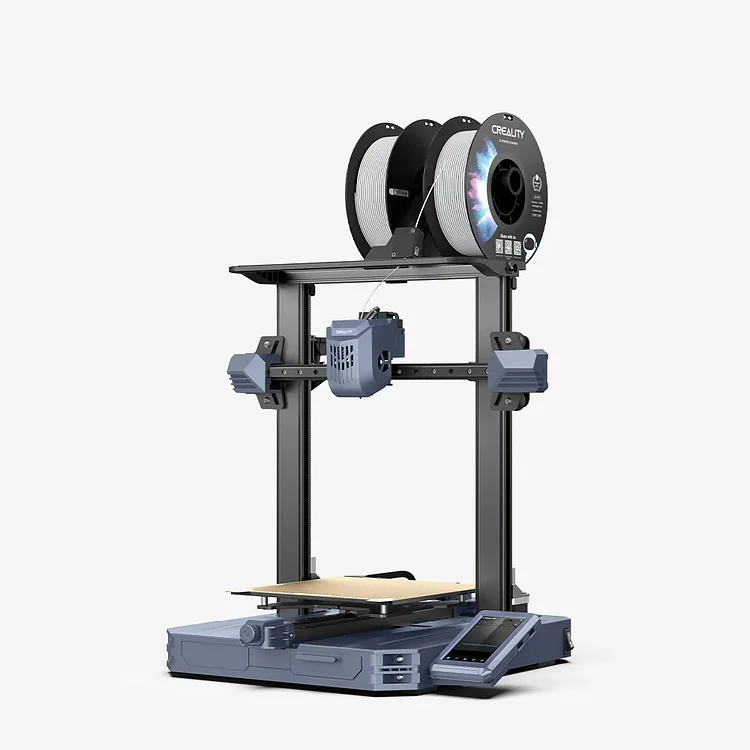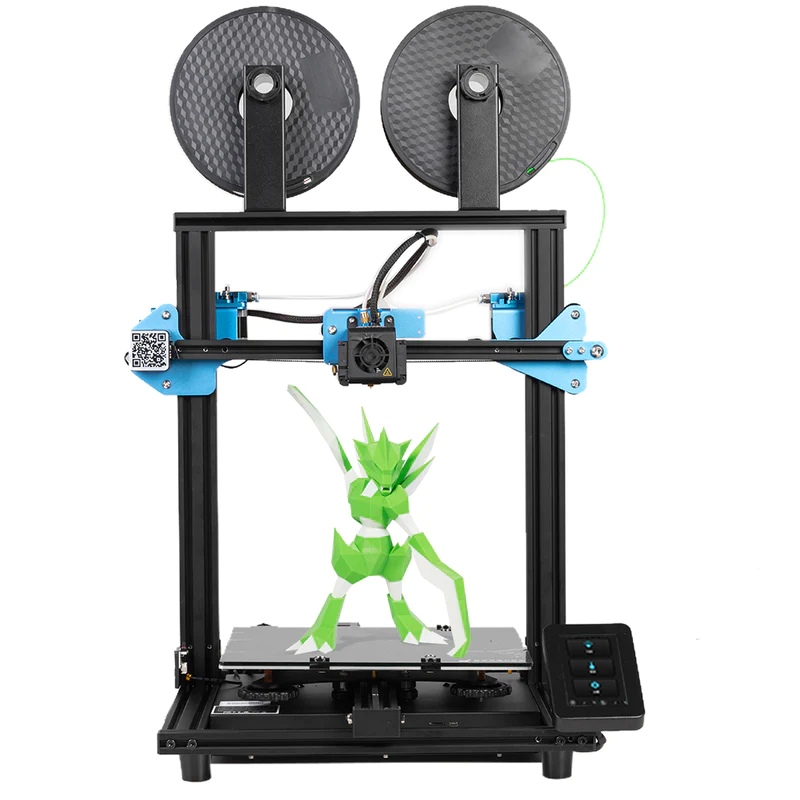Compare CR10 SE vs SV02
Comparison between the best 3D printers
Choose the best 3D printer at the best price. The cheapest 3D printers are here.
Buy a 3D printer here with 3D Fila.
 |
 |
|
| Model | CR10 SE |
SV02 |
| Printing Material | Filament | Filament |
| Buy Filament for Creality CR10 SE | Buy Filament forSovol SV02 | |
| Estimated price | $386,00 | $209,00 |
| Manufacturer | Creality | Sovol |
| Release Year | 2023 | 2020 |
| Print Volume [mm] | 220x220x265 | 280x240x300 |
| Printer Size [mm] | 490x470x625 | 539x493x710 |
| Weight [kg] | 6,9 | 11,86 |
| Power Loss Recovery | NO | YES |
| Enclosed printer | NO | NO |
| Bed Leveling | Manual | |
| Filament End Sensor | NO | NO |
| Bed type | Heated | |
| Power supply system | Direct Drive | Bowden |
| Standard nozzle | 0,4 | 0,4 |
| Maximum Nozzle Temperature [°C] | 300 | 260 |
| Maximum Bed Temperature [°C] | 110 | 110 |
| Maximum printing speed [mm/s] | 600 | 120 |
| Filament holder | YES | YES |
| Camera for supervision | YES | YES |
| Recommended filaments | PLA, PETG, PET, TPU, PA Wood, ABS, ASA, PA, PLA-CF | PLA, PETG, Tritan, Flex, ABS |
| Recommended slicers | Creality Print, Cura, Simplify3D, PrusaSlicer, Orca Slice | Cura, Simplify, Slic3r, IdeaMaker |
| Maximum Resolution [mm] | 0,1 | 0,1 |
| Processor | ||
| Display | Display touchscreen 4,3'' | |
| Power Supply | ||
| Connectivity | USB, Wifi | SD / USB |
| Operating systems | Windows, Linux, Macbook | Windows, Mac, Linux |
| Date of registration in the system | 2024-07-02 | 2022-11-10 |
| Release date | 2023 | 2020 |
| Extra features | The Creality CR10 SE stands out for its printing speed of up to 600 mm/s, easy and intuitive assembly, direct extruder with double gears, hotend with hardened steel nozzle and ceramic heater, automatic leveling with CR-Touch and pressure sensor, and use of Creality OS firmware based on Klipper, with automatic input shaping calibration. It also includes Wi-Fi connectivity, a filament out-of-stock sensor and a robust structure with linear rails on the X and Y axes. | The Sovol SV02 is a dual extrusion 3D printer with two inputs and one output hotend, silent motherboard and 4.3" color touchscreen. It includes a tempered glass platform for glue-free adhesion, dual Z-axis for more stability, and fast heating with Mean Well power supply. It has a resume printing function and support for upgrades, such as an automatic leveling sensor. |
| Support for multiple colors and materials (AMS and CFS) | NO | NO |
Notes * |
||
| Cost-benefit | 7 / 10 | 7 / 10 |
| Hardware | 2.1 / 10 | 1.5 / 10 |
| Tela | . | . |
| Print volume | 3 / 10 | 4 / 10 |
| Performance | 5 / 10 | 1 / 10 |
Conclusion |
| In comparing the Creality CR10 SE and Sovol SV02, several key factors stand out that can help potential buyers make an informed decision. The Creality CR10 SE, released in 2023, is priced higher but offers superior performance capabilities, including an impressive maximum printing speed of 600 mm/s and a range of recommended filaments that allows for versatile applications. Its advanced features, such as a direct drive extruder, hotend with hardened steel nozzle, and automatic leveling with CR-Touch, cater to users seeking high-quality prints. Moreover, the CR10 SE's construction is reinforced with linear rails on the X and Y axes, highlighting its robustness and reliability. On the other hand, the Sovol SV02, introduced in 2020, comes at a significantly lower price point, making it an attractive option for budget-minded consumers. Despite its lower performance metrics, it provides valuable features such as a dual extrusion system, silent motherboard, and a resume printing function. The SV02 is suited for those who require a user-friendly, cost-effective 3D printer that performs well with standard filaments and provides solid functionality without advanced features. Ultimately, the choice between the CR10 SE and the SV02 hinges on individual needs and budget considerations. The CR10 SE is ideal for serious enthusiasts and professionals looking for high-speed printing and advanced features, while the Sovol SV02 is a commendable entry-level option that balances functionality and affordability. The former brings a greater cost-benefit ratio, while the latter offers satisfactory performance for casual users. |

